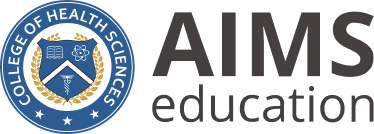How Recent Healthcare Trends Will Impact Medical Assistants
June 15, 2016
Straddling the worlds of clinical and administrative work, medical assistants experience changes in our healthcare system more than most. Many entering the field are wondering how the evolution of the healthcare industry will impact them.
Taking a look at three major trends, it’s clear that answering the question “What do medical assistants do?” is only going to get more difficult over time.
Medical assistants are poised to see their jobs get more technical and more complex as healthcare turns into a truly 21st-century field.
Data Analytics
The medical assistant job description has always been long and more fluid than that of most staff at a hospital or clinic, but it’s about to get a bit longer. The ever-increasing integration of data analytics into healthcare is affecting everyone in the field.
However, medical assistants are perhaps more ready to experience this change, as increasingly complex data analytics get integrated into both the clinical and administrative side of healthcare.
In fact, medical assistants will be at the front lines of the big data revolution approaching the medical field. Researchers and hospital administrators alike will rely on them to collect the enormous amounts of data necessary to mine for insights into how to make healthcare more efficient.
It may be a while before this kind of training makes it into medical assistant programs, but the job will certainly continue evolving in the meantime.
Catering to a Younger Generation
Medical assistants won’t just be on the front line of big data, they’ll also be right at the head of learning how to cater to a new generation of patients. Millennials have a different set of expectations about healthcare.
For example, a report from PricewaterhouseCoopers pointed out that this new generation expects more flexibility, convenience, and personalization when it comes to their healthcare.
In many ways, it’s going to be up to medical assistants to provide that experience. From booking appointments to administering care, they’re going to have to pioneer necessary changes within the field.
Without a more consumer-driven approach, some hospitals and clinics will be at risk of being made redundant or inefficient next to more savvy healthcare providers.
Integrate Technology

Bureau of Educational & Cultural Affairs / Flickr / CC BY-NC-ND
This trend is completely tied in with the generational shifts we’re seeing in healthcare today. Right alongside those changing expectations is the fact that the way to provide more personal and convenient healthcare is with technology.
Yet, a major problem has been that medical technology manufacturers haven’t been building products for the people who will use them (i.e. professionals like medical assistants). To change this, medical assistants will need to be more vocal in representing how they use medical technology.
Ultimately, if technology integration is going to have a major impact in the healthcare industry, it’s going to have to be easy to use for the professionals within it.
This aspect may be slow in coming, but there’s no shortage of tech in the meantime. Medical assistants are already managing information from patient’s bio sensors (i.e. the Vital Connect) and other self administered health monitoring technology.
For now, the best thing medical assistants can do is familiarize themselves with the latest healthcare technology by using it themselves.
Applying These Lessons for Those Looking to Become a Medical Assistant
Okay, so what does this all mean for your average 22-year-old in the middle of their medical assistant courses? They might very well be thinking “I’m a millennial. I grew up with technology, I should be able to integrate into this new world of healthcare easily.” Well, yes and no.
Sure, younger people will undoubtedly have a leg up in understanding these trends and how they will impact their jobs. However, understanding a trend and knowing how to manage the data or technology involved are different things.
Medical assistant programs aren’t going to be able to keep up with month by month developments, so it’s going to come down to finding the right program to train you how to adapt.
What does that look like? In short, combining education in the latest technology and trends impacting medical assistants alongside discussions of how to apply that training to the next generation of innovations. Ultimately, high quality, adaptable education is what’s going to make the crucial difference.
The good news is, no matter how these changes impact medical assistants precisely, the overall trends for the profession are extremely positive.
So, if you’re looking to become a medical assistant and live in the New Jersey area, check out our medical assistant courses.


 PAHO /
PAHO /  Medill DC /
Medill DC /